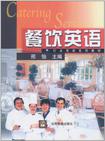餐饮英语
2003-7
蓝色畅想
邢怡 编
279
众所周知,我国高等教育的模式已经发生了巨大的变化,即从原先的强调培养研究型人才的精英化教育模式转变为注重培养应用型人才的大众化教育模式,而全国高等教育也已经开始进入提高质量和进行结构改革的新阶段。目前,高等职业技术教育已快占据了中国高等教育的半壁江山。随着高等职业技术学校数量的增加,高等教育本来已经面临的剧烈竞争达到了白热化的阶段。高等教育整体资源已经显示出供过于求的迹象,于是许多人开始把重点转移到优质教育上面,即注重教育的内涵发展,而不是外延扩展。 那么,高等职业技术教育的优质从何而来,内涵又是什么呢?很显然,优质来自市场的反馈,内涵意味着开发核心产品。说到底,高等职业技术教育的好坏取决于行业的评估结果,其核心竞争力来自学校与行业的紧密结合。不强调学多少,学多深,而强调学的东西在行业里能用到多少,用得效果好不好,这些就是高等职业技术教育的办学宗旨。 高等职业技术教育从本质上讲是就业教育,学校遵循的原则是按需办学。成功的办学模式是从过去的学校办学转化为产学合作,教育与产业需求同步,教学的内容就是产业实际需要用的东西。 国家教育部为高等职业技术教育提出的“实用为主,够用为度”的原则恰好符合了专门化用途英语的教学规律,紧密结合了行业的实际,突现了高等职业技术教育的特点,将上岗培训纳入到了教学内容中来。 由高等教育出版社组织编写的行业英语系列教材恰到好处地体现了这个原则。我们有充分的理由相信,在高等教育出版社的精心组织下。
《餐饮英语》是行业英语系列教材中的一本,其选材新颖,内容丰富,涵盖了餐饮服务行业的方方面面。《餐饮英语》围绕餐饮服务行业的职业需求,以任务为主线,将英语技能的培养和餐饮服务的培训结合在一起,通过任务模块的形式,寓教于乐,进行听、说、读、写、译交际能力的全面训练。《餐饮英语》是一本极具操作性、注重语言灵活运用的实践性教材,适用于相关专业的学生和本行业的社会从业人员。
UNIT 1 Types of RestaurantsPart I Types of Restaurants According to Food-stylePart Ⅱ Types of Restaurants According to Service-stylePart Ⅲ Western-style Restaurants and Chinese RestaurantsPart 1V Listen, Listen, and ListenUNIT 2 Foodserviee StaffingPart I The BasicPersonnel Structure of a RestaurantPart Ⅱ Organization of the Service Staff and Their WorkPart Ⅲ Guidelines for Service StaffPart IV Listen, Listen, and ListenUNIT 3 ReservationPart I Some Essentials of Reservation ArrangementPart Ⅱ Guidelines for Taking ReservationsPart Ⅲ Cases of Taking ReservationsPart 1V Listen, Listen, and ListenUNIT 4 Setting TablePart I Setting TablesProperlyPart II Folding Napkins and Laying a TableclothPart Ⅲ Table Setting for Chinese and Western DinnersPart 1V Listen, Listen, and ListenUNIT 5 Seating the GuestPart I The Essentials of SeatingPart II Assigning TablesPart Ill Showing Guests to the TablePart IV Listen, Listen, and ListenUNIT 6 Recommending DishesPart I Selling According to an Expressed NeedPart II Suggesting Alternative Menu ItemsPart IllPlus SellingPart 1V Switching Customers to Available FoodsPart V Listen, Listen, and ListenUNIT 7 Taking OrdersPart I Menu StructurePart II The Breakfast MenuPart Ⅲ Lunch and DinnerPart IV Listen, Listen, and ListenUNIT 8 FoodPreparationPart IPre-cooking WorkingPart II Methods of Cooking FoodsPart Ill Listen, Listen, and ListenUNIT 9 Beverage ServicePart I Alcoholic BeveragePart II Wine and FoodPart Ill WinesPart Listen, Listen, and ListenUNIT 10 Alternative ServicesPart I Room ServicePart II Fast FoodsPart III Take-away or Take-out ServicePart IV Buffet ServicePart V Listen, Listen, and ListenUNIT 11 Serving a BanquetPart I Banquet ServicePart II The MenuPart Ⅲ Rules for Serving BanquetsPart IV Listen, Listen, and ListenUNIT 12 CashierPart I Cash ControlPart II Using a Cash RegisterPart Ⅲ Credit Cards andPaymentPart IV Listen, Listen, and ListenUNIT 13 Sanitation and SafetyPart I A Welcoming EnvironmentPart II FoodPoisoning and First AidPart ⅢPersonal HygienePart 1V Listen, Listen, and ListenUNIT 14 Handling ComplaintsPart I The Guest Is Always RightPart II Dos and Donts of Handling ComplaintsPart Ⅲ Cases of Handling ComplaintsPart IV Listen, Listen, and ListenTapescriptReference Keys
W. Hi, Michael, is it the first time you have come to China? M. Yeah. China is really an amazing country. W. So you have got used to the life here, havent you? M. Sure. Chinese food is my favorite! W. You know, Chinese cuisine is well-known as one of the greatest cuisine all over the world, and its known for its remarkable diversity of cooking styles, the abundance and delicious range of ingredients. M. I was told that there are dozens of different basic ways in Chinese cooking, including roasting, frying, boiling and so on. All of them draw out the best in the ingredients. W. Thats true. You know, Chinese cooking is subdivided into many schools notable for their local flavors. M: What are they? W. The most popular and well-known schools include Beijing cooking, Sichuan cooking, Guangdong cooking and Shanghai cooking. M. Hey, tell me something more. W: These four schools of cooking represent different cooking styles in various Chinese areas respectively. For instance, most Beijing food has a high calorie value answering the demands of the cold northern climate.
